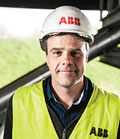Taking a measured approach to climate change through continuous emissions monitoring systems
The need to reduce emissions has never been greater.
IP: 10.3.138.59
This is a preview of our premium content. Thank you for your interest—please
log in or
subscribe to read the full article.
The Author
Goossens, B. - ABB, Frankfurt, Germany
Ben Goossens is the Strategic Business Development Manager for the ABB business line of continuous gas analyzers in Frankfurt. He is concerned with looking for new market opportunities and developing the wide portfolio range of continuous gas analyzers in the market in industries such as energy from waste or industrial gas applications. He also works with industry-leading companies to establish a close cooperation where ABB’s expertise can be beneficial to customers.
From the Archive







Comments